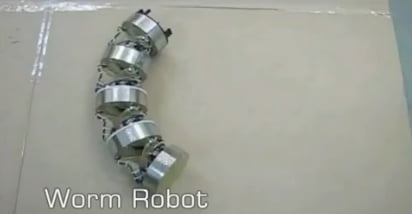The term “robot” was coined back in 1920 by the Czech playwright Carl Capek when he described a state of utopia, managed by man-like machines. Since then, university researchers and technology companies have been working fervently on turning that vision into reality. The Israel Institute of Technology (Technion) is spearheading the field.
In a recently released Youtube video a display of some of the institute’s new works was shown: a robotic snake, a self-driving motorcycle, a wall-climbing robot and various artificial intelligence demonstrations. The technologies were developed in several faculties in the Technion in Haifa – machine engineering, electronic engineering, computer science and civil engineering. Dr. Alon Wolf, Head of the Bio-Robotics and Bio-Mechanics Lab in the Machine Engineering faculty explains the variety of faculties participating: “robotics is such a vast and interdisciplinary field that there is no possibility for one lab or researcher to cover it in an optimal way.”
[youtube]http://www.youtube.com/watch?v=8HHb3Z4n-4M[/youtube]
While Capek’s vision may not be fulfilled by human-like robots, robots will “integrate our daily lives more in the next few years,” Wolf claims. In fact, “our washing machines and dishwashers are robots. Robot is an autonomous machine with an ability to sense its surroundings and change its behavior accordingly- my washing machine can estimate the weight of the cloths inside and work in a certain program,” explains Wolf. Robots are all around us, not only in the consumer world but in operating rooms and factories as well.
With that said, the million dollar question still remains- when will there be a robot that can make us coffee, drive us to work or do our laundry? “We’re getting there. Today we have a vacuum cleaner robot and surgery robots, but we don’t yet have a single machine that can do it all,” says Wolf. He adds that “the Japanese, who are the worldwide leaders in the field of robotics, are getting close. The artificial intelligence is still lacking – the abstracting ability to interpret precisely what the robot is sensing.”
…
To continue reading this article in Hebrew click here
Translation by Alexandra Man
Via it.themarker.com
Photo by MattHurst
Related posts

Editors’ & Readers’ Choice: 10 Favorite NoCamels Articles

Forward Facing: What Does The Future Hold For Israeli High-Tech?

Impact Innovation: Israeli Startups That Could Shape Our Future





Facebook comments